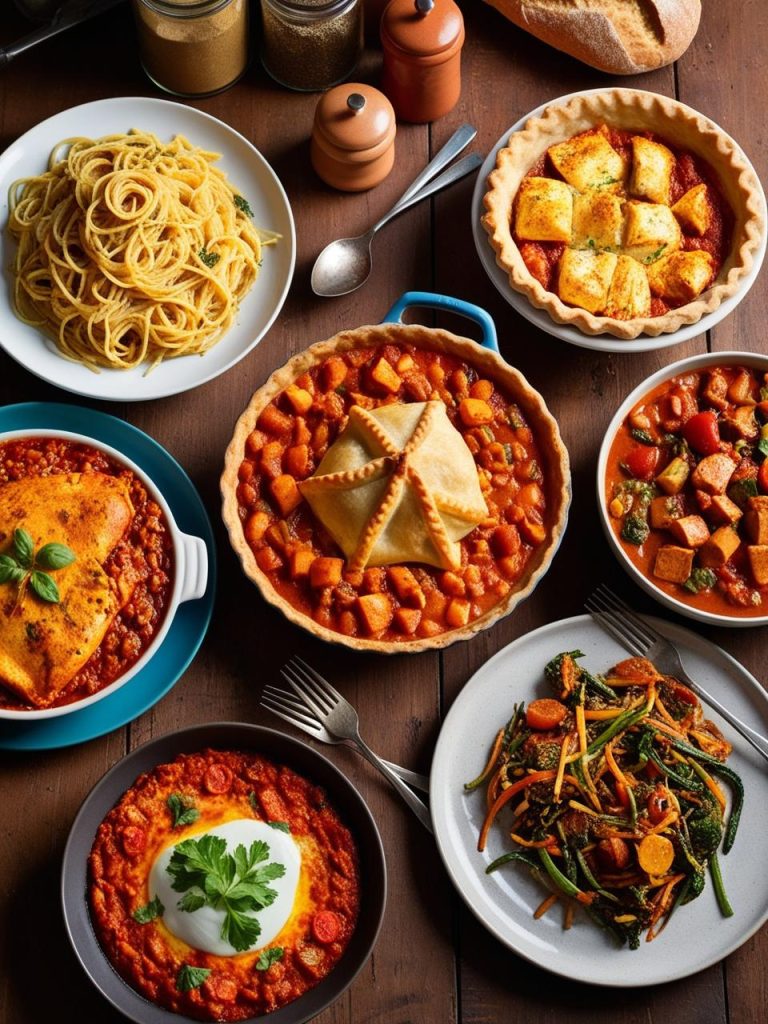5 Easy Dinner Ideas for Four with Rich Histories
When it comes to dinner, simple dishes often tell the most captivating stories. Each recipe on your table carries the flavors of its origins, reflecting the traditions, innovations, and cultural exchanges of the past.
From Italy’s humble yet iconic spaghetti aglio e olio to the comforting layers of a British shepherd’s pie, these meals connect us to the heart and soul of culinary history.
Let’s explore five easy-to-make dinner ideas, each paired with a tale of its journey across nations and generations, making every bite a delicious dive into heritage.
1. Spaghetti Aglio e Olio

Historical Background:
This simple yet flavorful pasta dish originated in Naples, Italy. “Aglio e olio” translates to “garlic and oil,” and it was traditionally a meal of the working class due to its reliance on pantry staples rather than expensive ingredients. The dish gained popularity throughout southern Italy before becoming a staple in Italian-American cuisine.
Cultural Significance:
It is cherished for its simplicity and speed, often served as a comforting dinner or late-night meal. The use of olive oil and garlic reflects Mediterranean culinary traditions dating back to ancient times, where these ingredients symbolized health and abundance.
2. Chicken Adobo

Historical Background:
Chicken Adobo is widely considered the unofficial national dish of the Philippines. The name “adobo” comes from the Spanish word for marinade or seasoning, though the dish predates Spanish colonization. Indigenous Filipinos cooked meat in vinegar and salt as a preservation technique before refrigeration was available.
Cultural Significance:
The dish is a staple in Filipino households and symbolizes comfort food. Regional variations incorporate soy sauce, coconut milk, or spices, showcasing the country’s diverse culinary landscape.
3. Shepherd’s Pie

Historical Background:
Shepherd’s Pie originated in the United Kingdom and Ireland in the late 18th century as a way to use leftover roasted meat. The traditional recipe uses minced lamb, vegetables, and a mashed potato crust. In some parts of England, it’s referred to as “cottage pie” when made with beef instead.
Cultural Significance:
This hearty dish became a symbol of thriftiness and home cooking during tough economic times. Today, it’s a beloved comfort food across the UK, Ireland, and beyond, especially in colder months.
4. Shakshuka

Historical Background:
Shakshuka is believed to have North African and Middle Eastern origins, particularly Tunisia. The dish is made by poaching eggs in a spiced tomato and bell pepper sauce. It was popularized by Jewish communities in the region and later spread across Israel and the Mediterranean.
Cultural Significance:
It’s often served as a hearty breakfast or dinner and symbolizes a shared meal enjoyed with friends or family. Variations exist across regions, incorporating different spices and vegetables.
5. Tacos de Carne Asada

Historical Background:
Tacos de carne asada are a cornerstone of Mexican street food culture. “Carne asada” translates to “grilled meat,” typically beef marinated and cooked over an open flame. The tradition of grilling meat dates back to early Mexican and indigenous cultures.
Cultural Significance:
Tacos have become symbolic of Mexican identity and cuisine, with variations found in every region. Tacos de carne asada are particularly popular in northern Mexico and have been embraced in the U.S., particularly in California and Texas.






